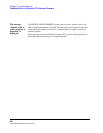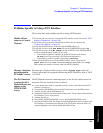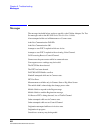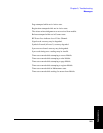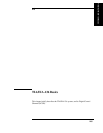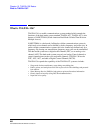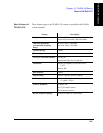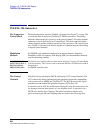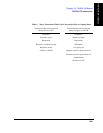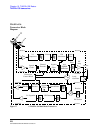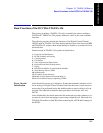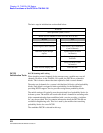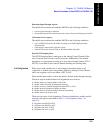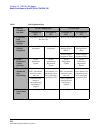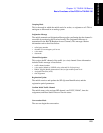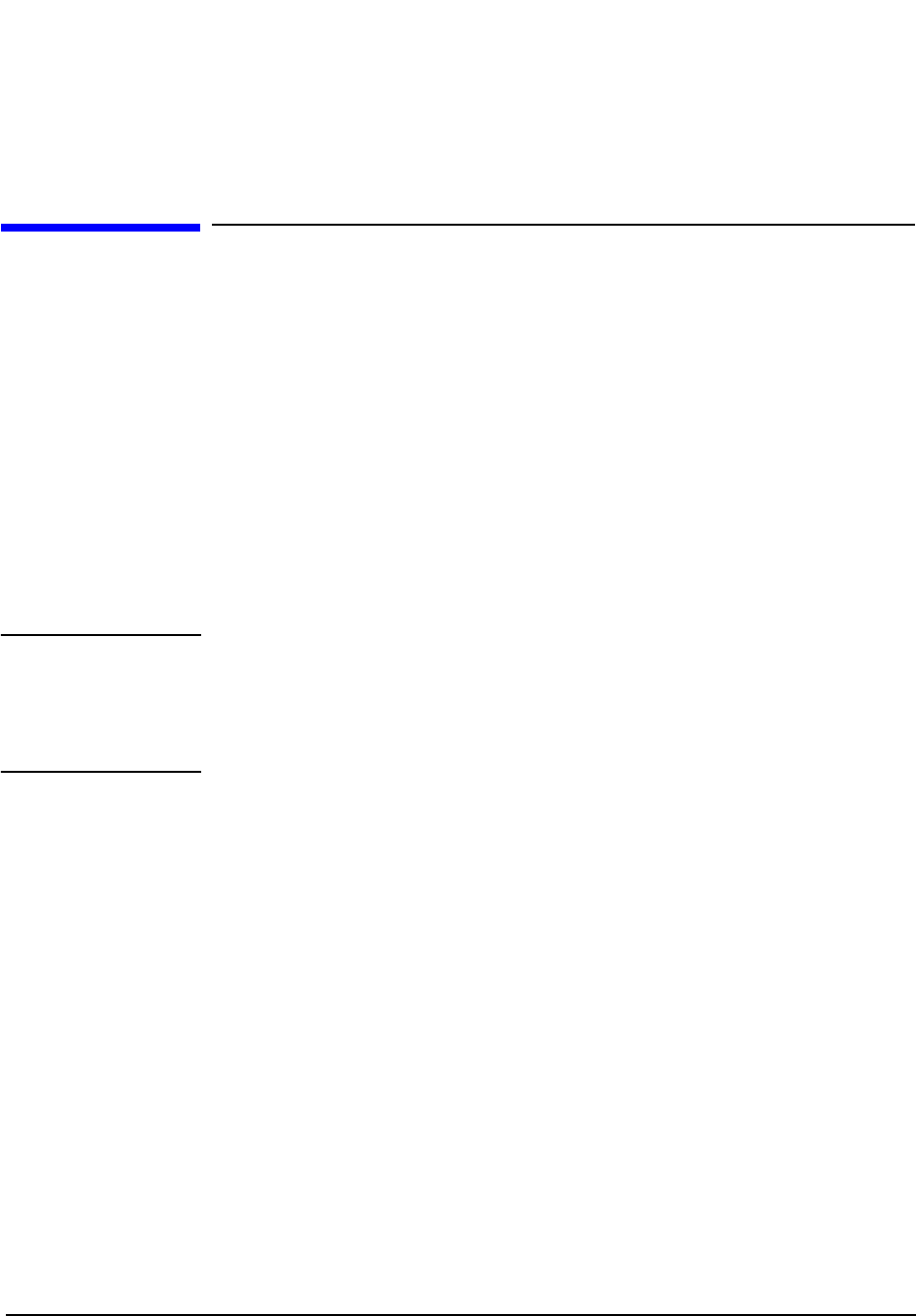
268
S:\HP83206A\USRGUIDE\MANUAL\is136bas.fm
Chapter 10, TIA/EIA-136 Basics
TIA/EIA-136 transceiver
TIA/EIA-136 transceiver
The Transceiver
Control Block
The block diagram for a typical TIA/EIA-136 transceiver (Figure 77 on page 270)
is nearly the same as that of an TIA/EIA-627 TDMA transceiver. The primary
difference between the two systems is in the control channel. All control channel
operations occur in the Transceiver Control Block. This block controls both the
control channels and the complete operation of the transceiver. The control block
for a TIA/EIA-136 transceiver must be capable of communicating in either analog
or digital control channels.
Modulation
Methods
π
/4 DQPSK is the modulation method for the digital channels. Frequency
Modulation (FM) or Frequency Shift Keying (FSK) are the modulation methods
used for the analog channels.
FM CIRCUITS CAN
OFTEN OCCUR IN A
DIGITAL SIGNAL
PROCESSOR (DSP)
The FM can occur digitally within a mobile station. In Figure 77 on page 270, the FM path
is shown separately. This is done in order to show that TIA/EIA-136 mobiles have both an
FM path and a
π
/4 DQPSK modulation path.
The Control
Channels
TIA/EIA-136 has both digital (DCCH) and analog (ACC) control channels. The
ACC controls the analog transmissions and guarantees backwards compatibility
with systems such as AMPS and TIA/EIA-627. The DCCH controls the digital
transmissions and enables the specialized features of TIA/EIA-136.
A transceiver on an ACC has an Idle mode. During this state, the transceiver waits
for messages from the base station, or it can originate a call. A transceiver on a
DCCH has a similar state: Camping. The major transactions which can be
processed during the Idle and Camping states are listed in the following table.



